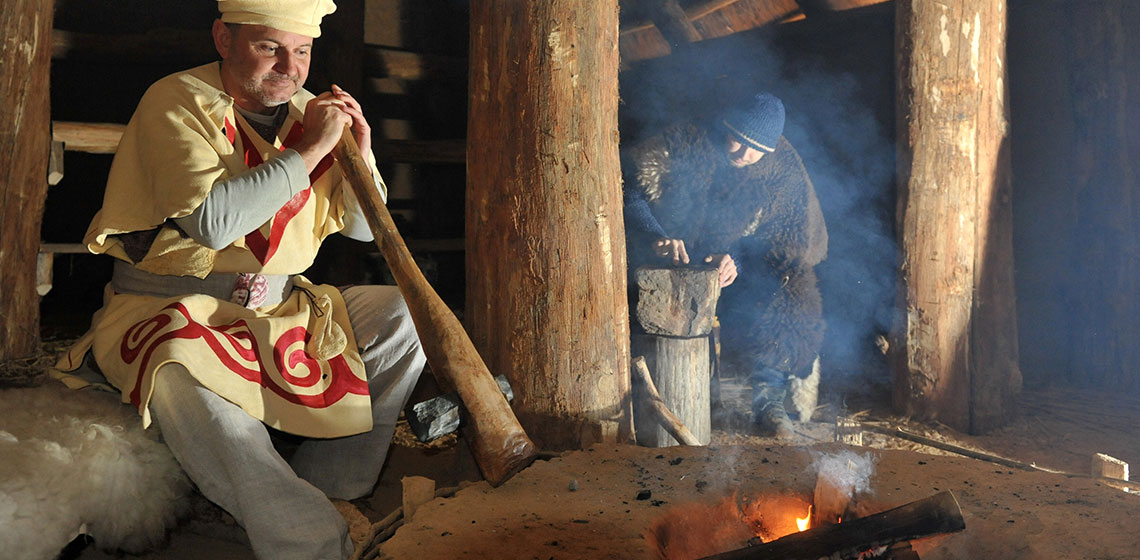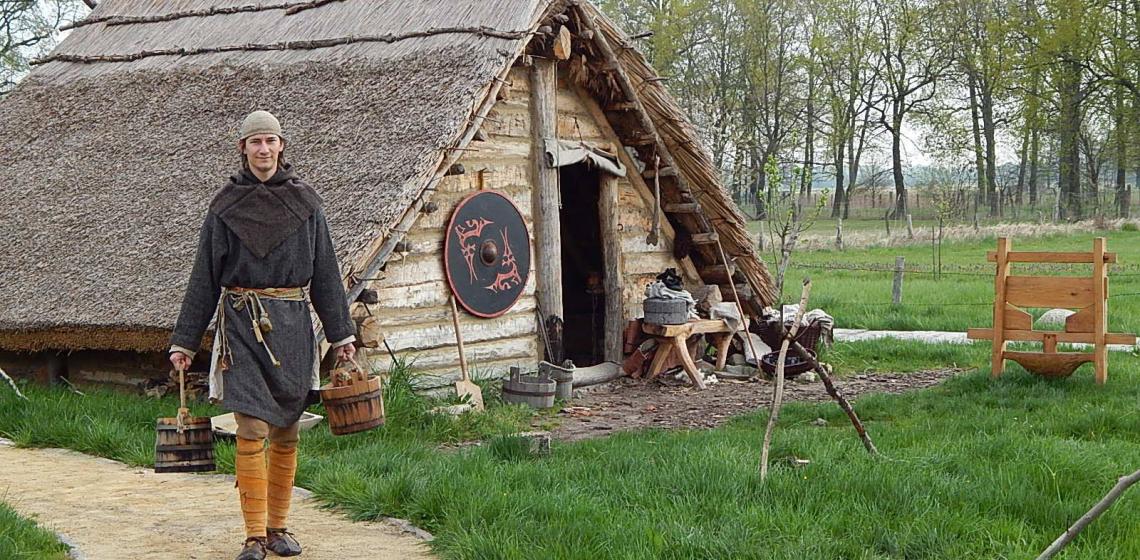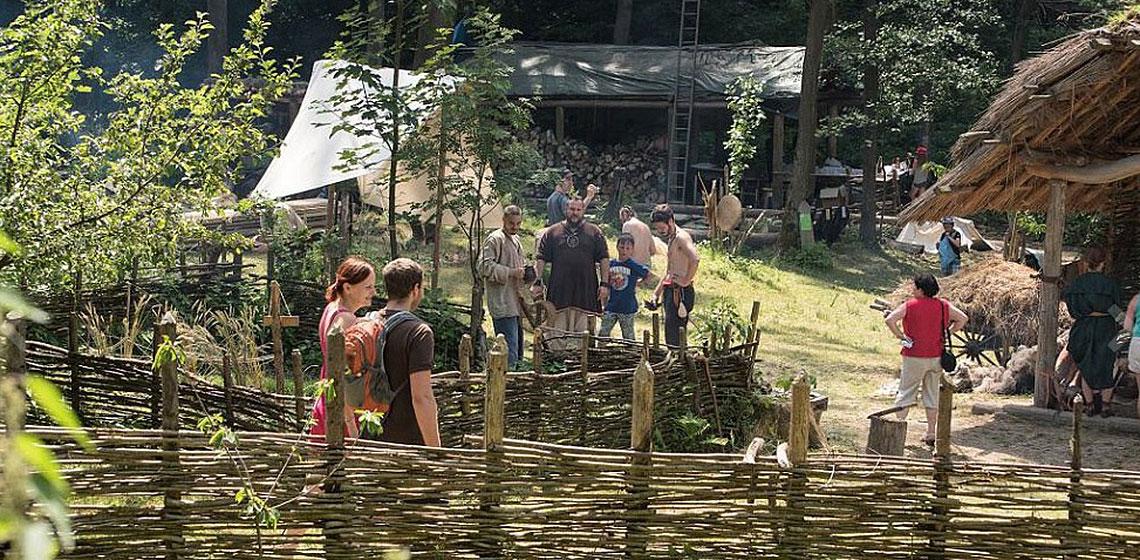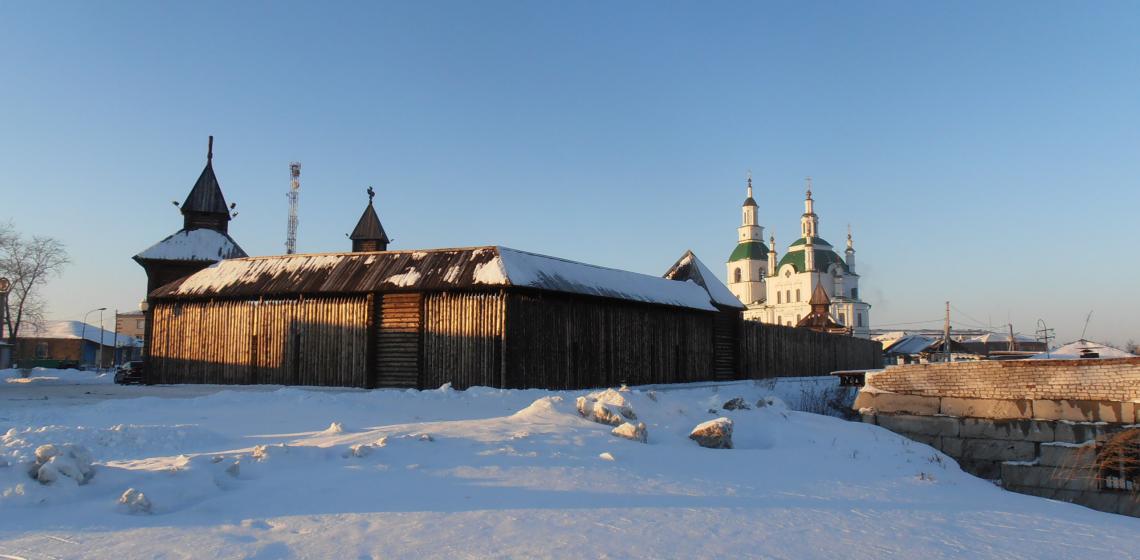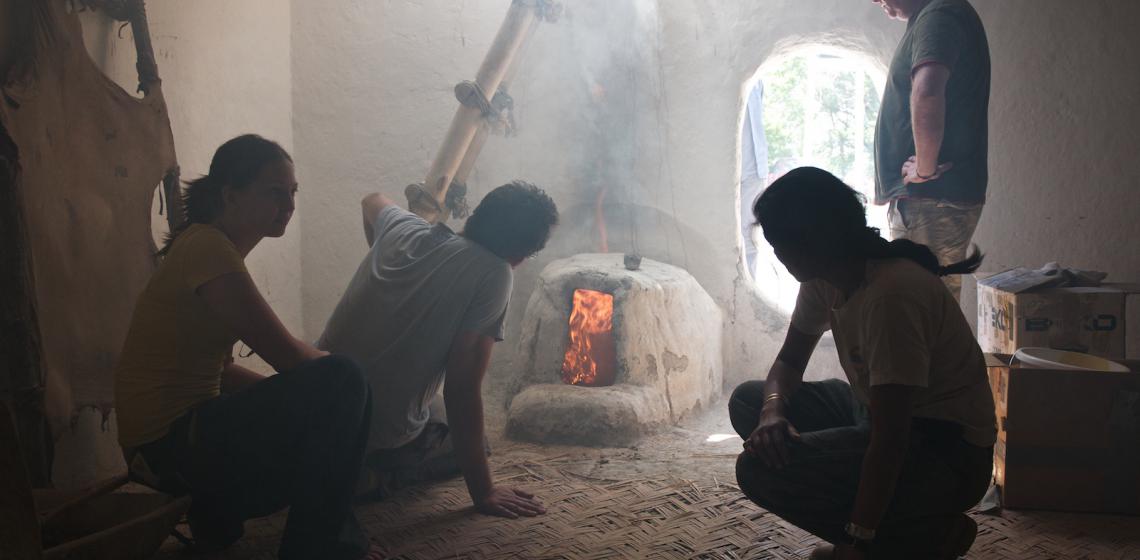Archaeological Open-Air Museum
“Days of Living Archaeology” at the Prehistoric Archaeopark Vsestary, Czech Republic
Freilichtkomplex Stary Lud (DE)
In the small settlement, which belongs to the local museum Dissen, one dives in the life of the Slavic Middle Ages. This goes back centuries, when Slavs inhabited the present region of Brandenburg and in the Lausitz the tribes of the Lusitzer and Milzener were home. This section of the settlement was reconstructed according to the interpretations of archaeological finds from the region and beyond.
A small settlement with five pit houses, which gives the impression that their inhabitants are on their way to the field. The weaver has set up the loom, dyed wool and clothes hang dry on the leash, and the potter has a half-finished pot on the potter’s table, in the sacred grove small sacrifices are laid down, and at the smithy the fire place still smokes. Times are peaceful, the weapons and the chain shirt are cleared away in the warrior's house. In all the pit houses one can see what was important for family life about 1000 years ago.
Ancient Ceramic Centre Pavlikeni (BG)
This Roman Era archaeological site is an open-air museum with part for experimental archaeology. It is a villa, which was one of the largest ceramic production centres in the province of Lower Moesia on the Balkans.
It is called the Ancient Ceramic Centre near Pavlikeni - a town in Northern Bulgaria. The site was made an open-air museum in the 70-es of 20th century by its first excavator - Bogdan Sultov. There you can see in situ exposed Roman kilns and buildings. An archaeological campus made of shards of Roman bricks, tiles, slag, is the only one of this kind. There is also a part for experimental archaeology with a reconstruction of potter's workshop and kilns. A museum building at the same site shows artefacts, found during the excavations.
Bacrie & Krivolik (CZ)
The association Bacrie was formed in 2007 from fans of history and archaeology. Its aim is to present and popularize prehistoric history on the territory of the Czech Republic.
The association deals with the life and technology of hunters, first farmers, bronze metal smelters and first ethnic groups – Celts, Germans or Slavs. Bacrie is engaged in research activities and its main project is the building of the Prehistoric settlement Krivolik – archaeological open-air museum and an experimental archaeological center.
Krivolik shows the development of human history, from the advent of modern man (Homo sapiens sapiens) (36,000 BC) up to the Early Middle Ages (900 AD). It goes about the main parts of our history – the culture of mammoth hunters, the transition to agriculture (Neolithic Revolution) and the beginning of metal processing. At the end of prehistory we have the first written report on our territory; we know the first names of the tribes and the rulers of some events.
Raversyde Anno 1465 (BE)
The first mention of a medieval village at this location dates to 1357. It was called ‘Walravens Hide’, landing site of Walraf. The village submerged during the Vincentius storm in 1394. Following the construction of a new dike in 1399 a new fisher’s village was built by the name Walraversijde.
The village prospered and counted at a certain time one hundred brick-built houses, a mill, a brewery and a gothic church. The village best days were around 1465, also the Golden Age of Flanders. In 1489, nearby Ostend was plundered: the start of the downfall of the region. By 1628 all what remained was the church tower.
Basotho Cultural Village (ZA)
A visit to the Basotho Cultural Village, which nestles at the foot of huge sandstone mountains in the Eastern Free State, will give you a deeper insight into the lifestyle of the South Sotho from the 16th century to the picturesque present. The Basotho Cultural Village is part of the Golden Gate Highlands National Park.
The Village regularly hosts art exhibitions as well as live stage performances at the sandstone amphitheatre. Here are also traditional dance and music competitions sure-casing local talent in cultural music by school children and community groups. The art gallery boasts work of local artists and a permanent photographic exhibition of the building process of the village and litem' art in the Eastern Free State.
Yaluturovsk Burg (RU)
Dear Yalutorov residents and guests of the city! Yalutorovsky prison opened its doors again! Yalutorovskiy Ostrog was recreated on the site of the Tatar settlement. The Prison is a unique historical object and display for tourists, built and opened on the 350th anniversary of the city Yalutorov. A high palisade with watchtowers protects the territory known for its centuries-old traditions. This later became the exile of the Decembrists.
In Yalutorovskiy Ostrog you can plunge into the world of peasant life, feel and enjoy the traditions of Russian culture. On the territory of the prison you will find crafts’ houses where the following crafts are demonstrated: patchwork, carpet weaving, pottery, weaving and painting on wood. There is also a smithy, a well-crane and shooting range. The exhibition hall shows products of Yalutorov masters as well as information on the first settlers.
Çatalhöyük (TR)
The ancient town of Çatalhöyük appears today as a large hill on the Anatolian plain. However the grass and soil conceal a settlement that was once lived in by 3,500 to 8,000 people more than 9,000 years ago. This concentrated farming community produced exceptional art and architecture for its time, making it one of the most important archaeological sites in the world.
There is a full-sized reconstruction of a typical Çatalhöyük home on site. It is open to visit, and also used by archaeologists to test their theories about the past. This first house has aided researchers in exploring how bricks were made, how fires were maintained in the ovens, how pigments and plaster were used on the walls, how bodies were buried in the floors. In 2016, four more replica buildings were constructed and opened in 2017.
Bakone Malapa Open-Air Museum (ZA)
This museum invites visitors to take a step back in time and explore a traditional Bakone tribal village, as it existed about 250 years ago. This open-air museum gives visitors the opportunity to gain insight into the background and history of the Bakone people who are a subgroup of the Northern Sotho tribe.
Bakone Malapa literally means Bakone Homestead and the village, set on the original site of an ancient village, and has been superbly reconstructed in the traditional Northern Sotho way.
Tours are conducted at various set times throughout the day and the guides are gifted story-tellers. They are informative when it comes to the ancient culture and history of the Bakone and they put their message across in an entertaining way. Two lapas (homesteads) in the Bakone Malapa Museum contain exhibits that give details of the Bakone’s long and interesting history.

